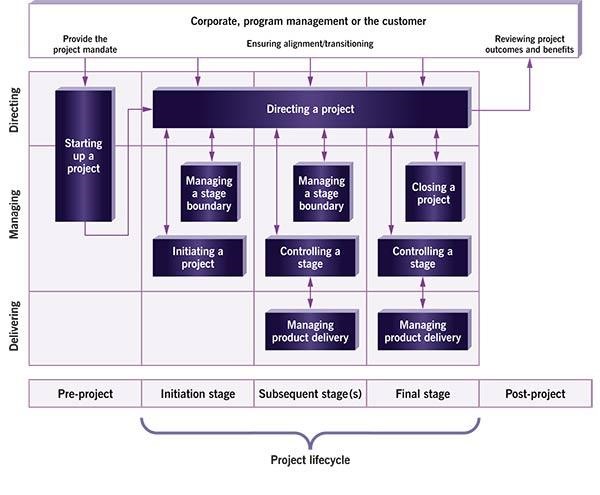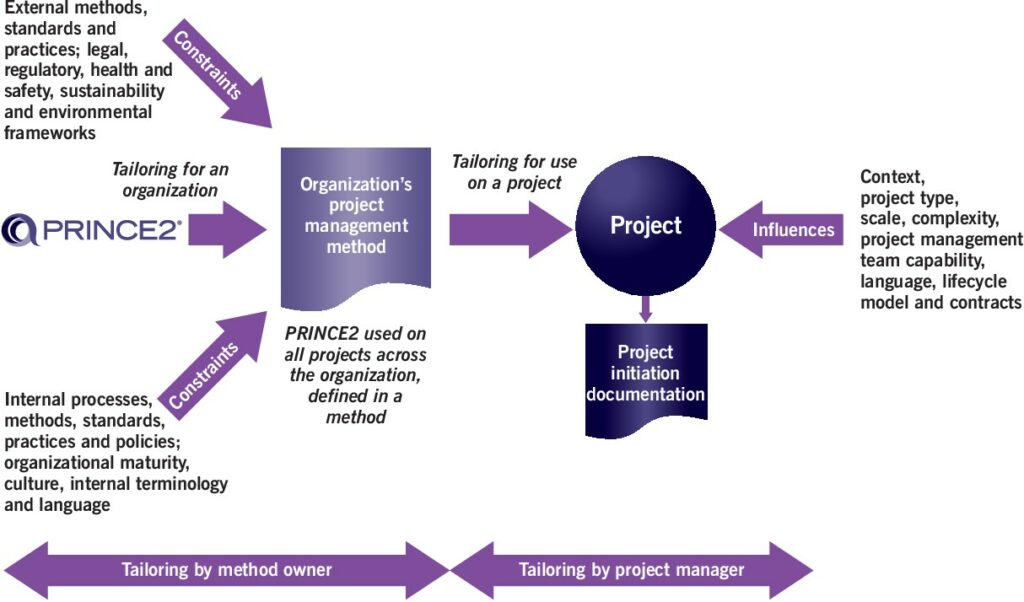Table of Contents
ToggleIn the dynamic realm of project management, methodologies such as PRINCE2 (Projects IN Controlled Environments) are indispensable for steering projects toward success. PRINCE2’s process-based approach is tailored for any project type, ensuring a well-structured and organized path from initiation to completion. This article delves into intermediate strategies for applying PRINCE2 principles in real-world scenarios, offering unique insights and practical advice for practitioners.

Understanding PRINCE2 Methodologies: The Core Principles
1. Continued Business Justification
Continued business justification ensures that the project remains viable and aligned with the organization’s strategic goals throughout its lifecycle. It involves regularly reviewing the business case to confirm that the project is still worth the investment. If the project no longer provides value or benefits, it should be adjusted or terminated. This principle ensures that resources are utilized effectively and that the project contributes to the overall success of the organization.
2. Learn from Experience
The principle of learning from experience emphasizes the importance of capturing lessons learned at every stage of the project. These lessons should be documented and used to inform future projects, enhancing the organization’s overall project management capabilities. By systematically reflecting on past successes and failures, project teams can avoid repeating mistakes and continuously improve their processes and outcomes, leading to more efficient and successful projects.
3. Defined Roles and Responsibilities
Defined roles and responsibilities ensure that everyone involved in the project understands their specific duties and the expectations placed upon them. This clarity helps in establishing accountability and fostering effective collaboration among team members. Each role within PRINCE2 is clearly defined with specific responsibilities, ensuring that tasks are allocated appropriately and that there is no ambiguity in decision-making or execution.
4. Manage by Stages
Managing by stages involves breaking the project into manageable phases, each with specific objectives and deliverables. This approach allows for better control and flexibility, as the project can be reviewed and assessed at the end of each stage before moving forward. It ensures that risks are identified and managed, resources are allocated efficiently, and any necessary adjustments are made in a timely manner, thereby improving the chances of project success.
5. Manage by Exception
The principle of managing by exception provides a framework for delegating authority within defined limits, allowing senior management to focus on strategic oversight rather than day-to-day operations. Tolerances for scope, budget, and schedule are set at the beginning of the project, and as long as the project stays within these limits, the project manager has the autonomy to make decisions. This approach reduces the need for constant supervision and empowers project managers to handle issues independently.
6. Focus on Products
Focusing on products means that the project’s outputs and deliverables are clearly defined and agreed upon from the outset. This principle ensures that everyone involved understands what is to be produced, enabling better planning and quality control. By concentrating on the final products, rather than the activities to create them, the project team can maintain a clear vision of what success looks like, ensuring that all efforts are aligned towards achieving the desired outcomes.
7. Tailor to Suit the Project Environment
Tailoring PRINCE2 to suit the project environment involves adapting the methodology to meet the specific needs and context of the project. This ensures that the approach is flexible and relevant, taking into consideration the project’s size, complexity, industry, and risks. By customizing PRINCE2, organizations can ensure that the principles and processes are applied in a way that adds maximum value and enhances the effectiveness of the project management approach.
These principles ensure that projects are justified, learn from previous endeavors, and are adaptable to specific needs.
Key Components
- Themes: Business Case, Organization, Quality, Plans, Risk, Change, Progress
- Processes: Starting Up a Project, Initiating a Project, Directing a Project, Controlling a Stage, Managing Product Delivery, Managing a Stage Boundary, Closing a Project

Source: AXELOS
Intermediate Strategies for Effective PRINCE2 Implementation
1. Tailoring PRINCE2 to Fit the Project
Tailoring is crucial for applying PRINCE2 in various environments. It involves adapting the methodology to the specific context of the project without compromising the principles.
| Tailoring Aspects | Key Considerations |
|---|---|
| Project Size | Adjust documentation and processes based on project scale. |
| Complexity | Use detailed plans for complex projects and simplified approaches for less complex ones. |
| Risk | Implement thorough risk management practices for high-risk projects. |
2. Integrating Agile Practices
Incorporating Agile methodologies within PRINCE2 enhances flexibility and responsiveness. This hybrid approach leverages the structured framework of PRINCE2 and the iterative, adaptive nature of Agile.
| Integration Points | Benefits |
|---|---|
| Daily Stand-ups | Improved communication and quick issue resolution. |
| Sprints | Incremental delivery ensures continuous improvement. |
3. Enhancing Communication and Stakeholder Engagement
Effective communication is vital for project success. Using PRINCE2’s defined roles and responsibilities, create a robust communication plan to ensure all stakeholders are informed and engaged.
4. Leveraging Technology and Tools
By utilizing project management software to automate processes, track progress, and maintain documentation. Tools like MS Project, JIRA, and Trello can integrate seamlessly with PRINCE2 methodologies.
PRINCE2 Principles in Action: Case Study
Case Study: IT Infrastructure Upgrade
Background
A large corporation faced the challenge of upgrading its aging IT infrastructure to support new business processes and improve overall performance. The project involved significant risks, including potential downtime and data security concerns.
Objectives
- Upgrade the IT infrastructure with minimal disruption to business operations.
- Ensure data security and compliance with industry standards.
- Deliver the projects within the budget and timeframe.
PRINCE2 Implementation
Tailoring PRINCE2: The project team adapted PRINCE2 principles to suit the scale and complexity of the IT upgrade. Specific adjustments included:
- Continued Business Justification: Regular reviews of the business case ensured ongoing alignment with strategic goals.
- Defined Roles and Responsibilities: Clear role definitions helped in managing the diverse team of IT specialists and external vendors.
- Manage by Stages: The project was divided into stages, each with defined deliverables, allowing for controlled progress and risk management.
- Manage by Exception: Tolerances were set for time, cost, and quality, empowering the project manager to handle issues within these limits without constant senior management intervention.

Source: AXELOS
Key Achievements
- Risk Management: identify and mitigate risks proactively, including data security measures and fallback plans.
- Communication: Effective communication strategies ensured all stakeholders were informed and engaged throughout the project.
- On-Time Delivery: The project was completed on schedule, minimizing downtime and disruption to business operations.
- Budget Management: Adherence to the budget through meticulous planning and cost control measures.
Outcome
The upgraded IT infrastructure enhanced operational efficiency supported new business processes, and improved data security, ultimately contributing to the corporation’s strategic objectives.
Benefits of PRINCE2 Certificatio
1. Professional Development: PRINCE2 certification enhances your project management skills, making you adept at handling diverse projects with structured methodologies.
2. Career Advancement: Certified PRINCE2 practitioners are in high demand across industries. The PRINCE2 7 Foundation and PRINCE2 7 Practitioner certification validates your ability to manage projects efficiently, increasing your job prospects and potential for career growth.
3. Organizational Benefits: Organizations benefit from having certified PRINCE2 professionals by ensuring projects are executed with a standardized approach, reducing risks, and improving project outcomes.
Industry-Recognized Project Management Certification Training
Importance in Today’s Global Economy
In today’s projected economy, where projects are integral to achieving strategic objectives, industry-recognized project management certifications are critical. They ensure that professionals are equipped with industry relevant skills and knowledge to manage projects effectively.
| Certification | Key Features | Benefits |
|---|---|---|
| PRINCE2 | Process-based approach, flexibility, and adaptability. | Standardized project management framework. |
| PMP | Comprehensive PMBOK guide-based approach. | Globally recognized, enhances credibility. |
| AgilePM | Focus on Agile methodologies and practices. | Increases flexibility and adaptability. |
Why Certification Matters?
- Competitive Edge: Certified professionals stand out in the job market.
- Quality Assurance: Certifications ensure adherence to best practices.
- Continuous Learning: Staying updated with the latest trends and methodologies.
Conclusion
Applying PRINCE2 methodologies in real-world scenarios requires a strategic approach tailored to the specific needs of the project. By integrating Agile practices, leveraging technology, and ensuring effective communication, PRINCE2 practitioners can drive successful project outcomes. Certification in PRINCE2 not only enhances individual skills but also provides significant benefits to organizations, ensuring projects are managed efficiently in today’s global economy.
